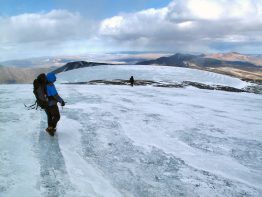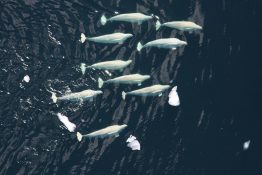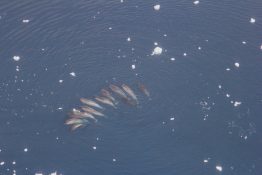The Seeley family is building bridges between a pristine, remote atoll in French Polynesia and the University of Washington. James and Marsha Seeley, parents of UW alumni Laine, ’85, David, ’86, and Elizabeth, ’90, and grandparents to a growing number of Huskies, have led their family in supporting UW marine research at a field station on Tetiaroa. There, scientists and students from the College of the Environment can study delicate, healthy marine ecosystems and develop an understanding of conservation’s future in the face of climate change.
Read more in Columns Magazine »Glaciers in Mongolia's Gobi Desert actually shrank during the last ice age
The simple story says that during the last ice age, temperatures were colder and ice sheets expanded around the planet. That may hold true for most of Europe and North America, but new research from scientists in the Department of Earth and Space Sciences at the UW tells a different story in the high-altitude, desert climates of Mongolia. The recent paper in Quaternary Science Reviews is the first to date ancient glaciers in the high mountains of Mongolia’s Gobi Desert.
Read more at UW Today »Three UW Innovation Awards given to UW Environment faculty
College of the Environment faculty received all three of the University of Washington’s Innovation Awards for 2018. The awards are designed to stimulate innovation among faculty from a range of disciplines and to reward some of their most novel ideas, and are made possible by generous donors. Knut Christianson and Michelle Koutnik from the Earth and Space Sciences, along with David Shean from Civil and Environmental Engineering, were awarded $300,000 over two years to “build a digital glacier time machine” that will generate a high-resolution, 3-D time series of how glaciers have changed over time to help understand the future of water resources in the western United States.
Read more at the Office of Research »Beluga whales dive deeper, longer to find food in Arctic
The reduction of Arctic sea ice has a clear impact on animals that rely on frozen surfaces for feeding, mating and migrating. But sea ice loss is changing Arctic habitat and affecting other species in more indirect ways, new research finds. Beluga whales that spend summers feeding in the Arctic must dive deeper and longer to find food than in previous years, according to a new analysis led by University of Washington researchers.
Read more at UW Today »Research uncovers the mysterious lives of narwhals
Narwhals are some of the most elusive creatures in the ocean, spending most of their lives in deep water far from shore. But research being presented at the Ocean Sciences Meeting in Portland Feb. 12 may shed a bit of light on these enigmatic marine mammals. New research shows narwhals may prefer to congregate near unique glacier fjords with thick ice fronts and low to moderate calving activity, where icebergs break off infrequently.
Read more at UW Today »





